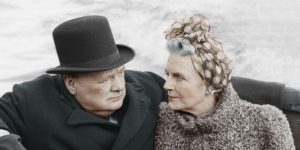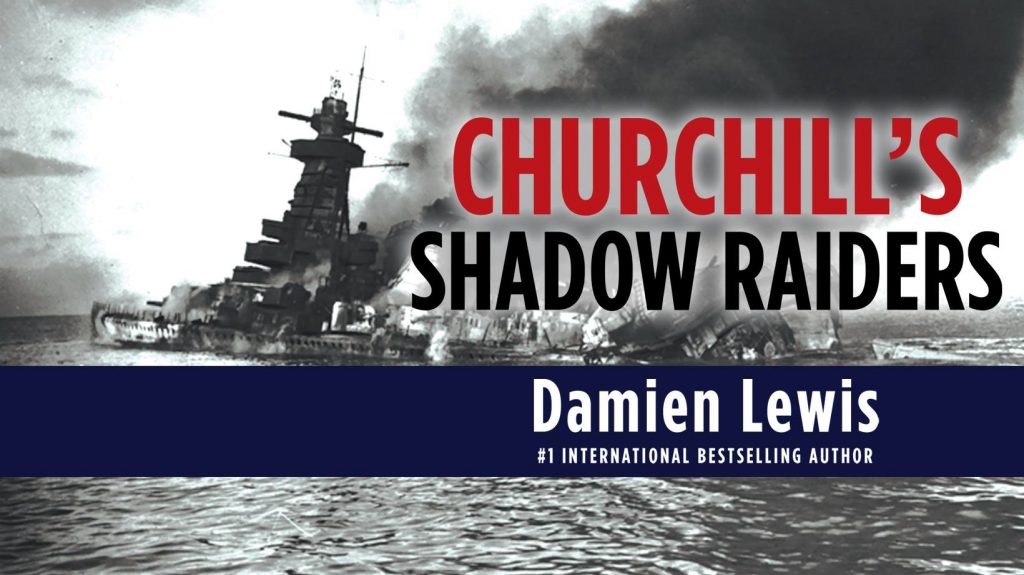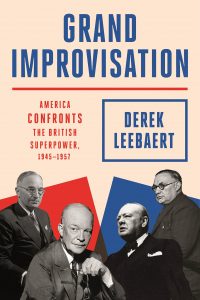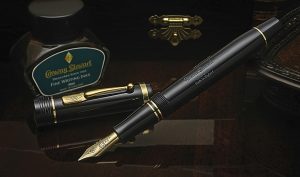
Bulletin #144 – Jun 2020
Churchill’s Shadow Raiders

May 31, 2020
Review by ROBERT A. MCLAIN
Damien Lewis, Churchill’s Shadow Raiders: The Race to Develop Radar, WWII’s Invisible Secret Weapon, Citadel Press, 2020, 389 pages, $27. ISBN: 978–0806540634
Lamentably the role of technology in the Second World War has received relatively little attention compared to major campaigns, particularly given the importance of technology in winning the war. The conflict was fundamentally a technological race for better military intelligence and improved weaponry. In this regard, Damien Lewis’s Churchill’s Shadow Raiders reveals the crucial role of radar in defeating the Luftwaffe, itself a precedent for the Anglo-American landings in 1944.
A journalist by training, Lewis has written extensively on special operations. This was furthered in the summer of 2018, when he had the good fortune to gain access to the archives of the Telecommunications Research Establishment [TRE], which was Britain’s principal wartime effort at radar intelligence and counterintelligence. R. V. Jones, a one of the TRE’s key scientists, suspected that the Germans had developed a short-range radar system to complement its longer-range “Freya” units. The deadly short-range Würzburg parabolic radars were in fact vectoring German night fighters to RAF bomber streams that resulted in staggering losses for the British.
Jones was fascinated by photo reconnaissance and spent significant time at Danesfield House, the manor where young Sarah Churchill served as a skilled interpreter of aerial photos. There, in late 1941, Jones and an assistant examined images that seemingly confirmed the presence of a Würzburg emplacement on the French coast at the village of Bruneval.

2025 International Churchill Conference
Jones and his colleagues within the TRE saw a clear opportunity: steal this key technology. The installation sat close to the beach in an isolated area. French operatives, many of whom would be captured and executed later, reported only a thin German presence in the region. Jones shopped the idea of a “snatch and grab” operation to Professor Frederick Lindemann, Churchill’s prickly confidant and scientific advisor. In a familiar pattern, Churchill jumped at the bold idea only to face opposition from his own cabinet.
The opposition stemmed from the failure of Britain’s first airborne raid, Operation Colossus, which had sought to hamper the Axis by destroying a key aqueduct in southern Italy. The successful destruction, however, had little effect on the Italian war effort, and Italian forces captured nearly the entire force of thirty-eight men from the newly formed Special Air Service commando team. Lewis spends nearly one-third of the book on Colossus. It makes for gripping reading, yet it detracts somewhat from the main subject.
Churchill overcame objections to the proposed assault at Bruneval, codenamed “Biting,” by appointing the ardent Lord Louis Mountbatten to oversee special operations. Major John Frost, of the 1st Airborne Division, would lead the raid directly with a force of 120 men. On the night of 27–28 February 1942, Frost and his paras dropped into the Bruneval area.
The most gripping part of Lewis’s work tracks the raid itself and the assault on the Würzburg installation. Speed was essential because planners expected that German reinforcements would arrive in the area relatively quickly. The raiders initially cleared German bunkers while others dismantled the Würzburg set under intense German fire. Having secured the key elements of the Würzburg, Frost and his men found themselves in a running gun battle as they moved towards the beach for a rendezvous with the boats that would ferry them to destroyers offshore. British commandos had seized a vital piece of Germany’s air defense technology at the cost of two killed and twelve wounded or captured. In stark contrast to Colossus, nearly the entire British force returned safely.
Lewis notes the far-reaching effects of Operation Biting. The resulting intelligence allowed a British scientist and mathematician, Mrs. Joan Curran, to perfect the use of “Window,” the dropping of millions of thin aluminum foil strips to blind the Würzburg radar system. The only trouble was getting Bomber Command to adopt it as a means of suppressing Germany’s deadly system of antiaircraft guns and the night fighters that were vectored against the bomber streams.
TRE boffins lobbied for more than a year for the widespread adoption of Window, only to be refused out of the fear that the Germans would reciprocate against England’s equally susceptible radar network. Jones saw this logic as nonsensical, arguing forcefully to the cabinet that the Germans undoubtedly already knew of Window. Neglecting to use the new system cost lives, as demonstrated by the 11,000 air crewmen and 1,600 planes lost while the political debate played out. These heavy losses, however, eventually settled the matter and resulted in one of the most devastating RAF raids of the war, the bombing of Hamburg in late July 1943.
The Bruneval Raid directly contributed to the success of the Hamburg operation. The losses of the RAF, though still immense, were undoubtedly reduced in future operations. Arthur Harris’s prediction that the Nazis would “reap the whirlwind” resulted in large part because of Churchill’s vision with regard to special operations.
Robert A. McLain is Professor of History at California State University, Fullerton.
Subscribe
WANT MORE?
Get the Churchill Bulletin delivered to your inbox once a month.





